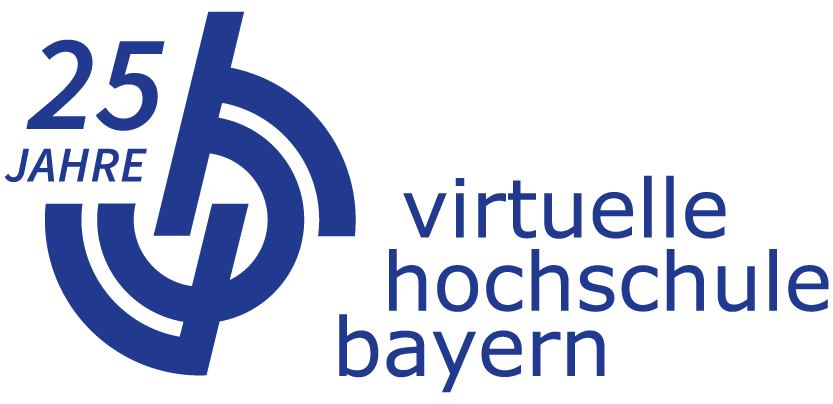TL;DR - Convey topics briefly and concisely
TL;DR - Convey topics briefly and concisely
| Angeboten von: | Prof. Dr. Sandra Niedermeier, Prof. Dr. Katrin Winkler | ||
| Anbietende Hochschule: | HAW Kempten | ||
| Kurssprache: | Englisch | ||
| Wissensgebiet: | Schlüsselqualifikationen | Kostenfrei | |
| Durchschnittliche Bearbeitungszeit: | 10 Stunden | Kostenfrei | Einschreiben |
| Bildnachweis: Canva Premium | |||
Was können Sie in diesem Kurs lernen?
The following is a more detailed overview of the content, which may change slightly during the project:
This chapter tries to answer the following questions: What is attention and why is it declining? What can be done to keep it high, to stimulate it?
1.1 Why is attention relevant?
The attention span of humans is decreasing more and more, one (not quite scientific) theory even says that the attention span of a goldfish is higher than that of a human. This section addresses the problem of attention decreasing with an increasing amount of information and that, for example, attention can be stimulated by purposeful preparation of information. In addition, it considers the influence of media use which can lead to greater forgetting or poorer recall due to attention deficits during use, as a study by Madore et al. (2020) shows.
1.2 What is behind it?
This section explores the theoretical background of attention. Attention is considered a necessary process of the brain to process information. Basic concepts such as attention span and attention processes are explained and considered in relation to perception and focus (other relevant processes for processing information), to include, among others, selective attention and its consequences as well as memory processes ("memorizing").
1.3 How can attention be stimulated?
In this section, methods to stimulate attention are outlined: Headlining – generating attention through captivating headlines (McCormack, 2014, among others) and Multimedia design in information delivery and audience activation (Multimedia Theory according to Mayer, 2009).
Communication must be brief and to the point, in the virtual world as well as in the analogue one, but it also needs to address emotions through stories. This chapter wants to teach these core elements.
2.1 Why is inspiring communication relevant?
In our fast-moving times, which are characterized by a veritable flood of information, it is becoming increasingly important to communicate in a concise, succinct and inspiring manner in order to reach people at all (McCormack, 2014). This applies to a wide variety of contexts, both analogue and digital, verbal or written, etc.
2.2 What is behind inspiring communication?
In order to be able to communicate in an inspiring way, some important basics of communication must first be mastered. These include basic concepts such as verbal/nonverbal or synchronous/asynchronous communication as well as fundamental principles such as the sender-receiver model or the theories of Watzlawick and Schulz von Thun. These are explained out in this section as well as basics of inspiration, as pointed out for example by Trash & Elliot (2003).
2.3 How can inspiring communication succeed?
As methods for inspirational communication, the following elements are presented: Storytelling as one of the currently most popular method for the emotional and inspiring communication of information (its popularity is shown, for example, by the large number of training offers on this topic); Succinct communication in a 1:1 setting; Precise writing; and Inspiring and succinct presentation.
Often, we try to explain complex facts in a just as complex manner. This leads to lengthy explanations that the receivers can hardly process. This is the opposite of inspiring communication and should be avoided.
3.1 Why is complexity reduction relevant?
If you want to broker information, it must be to the point and appealing. This will only work if the information has a low degree of complexity. So, complex facts must be broken down into brief, understandable units.
3.2 What is behind complexity reduction?
Reducing complexity can be achieved by two basic principles, reductionism (i. e., leaving out individual sub-areas) or focusing on important sub-areas. The goal is to simplify and not to distort (Luhmann 1987). For example, complex interrelationships can be represented in iterative yet simple processes. This reduces the complexity of communication.
3.3 What can be done against it?
This section presents the following methods for reducing the complexity of information to be conveyed: WHY - focusing on the why question (Sinek 2011); The Brief Method (McCormack 2014); Creating Summaries: Memos and Management Summaries.
In times of ubiquitous information overload, knowledge and information management is a helpful coping strategy.
4.1 Why is Knowledge and Information Management relevant?
Knowledge and information management is particularly helpful in a professional context and in teamwork to structure, document and communicate knowledge and information, important elements between the poles of missing and too much information – especially in times of virtual collaboration.
4.2 What is behind Knowledge and Information Management?
This section presents various models of knowledge and information management (the Munich knowledge management model according to Mandl and Reinmann-Rothmeier, the knowledge spiral according to Nonaka and Takeuchi as well as the building block model according to Probst, Raub and Romhardt) and considered them in the context of a continually increasing virtual collaboration.
4.3 How can this be implemented?
This section shows practical methods for managing knowledge and information. The focus here is on methods for virtual collaboration in a professional context. These include stimulating exchange and networking, creating information collections, etc.
Gliederung
In terms of content, the course covers four main areas:
1. Attention
2. Inspiring communication
3. Complexity reduction
4. Knowledge and information management
Each of these four areas ist divided into
1. Why ist it relevant?
2. What is behind it? (Theoretical basics)
3. What can be done against it? (Methods, tools and tips)
Angeboten von

Prof. Dr. Katrin Winkler is a Human Resources and Leadership professor at Kempten University. The many years she´s spent leading international teams and consulting leaders around the world, gave her great insight on how to motivate and inspire people - insights she wants to share with you in this open course.

Prof. Dr. Sandra Niedermeier is a professor for Digitalilzation in education and society at Kempten University.
Weitere Mitwirkende

Nicola Bramwell, research assistant at the Institute for digital Learning of UAS Kempten, is a business leader with 20+ years’ experience in complex industries. Expertise she brings includes business strategy, innovative leadership, change management and effective communication.

Lisa Herb is a research associate at the Institute for Digital Learning at Kempten University of Applied Science.
Zielgruppe
With the change in the world of work and society, the advancing digitalization in all areas, the way we communicate and exchange information has changed permanently.
Whereas in the past, information had to be looked up by hand, today it is available to (almost) everyone, regardless of time and place - information has become a "mass product", we live in a continuous information overflow.
At the same time, collaboration in the professional context has changed, we work together virtually more and more . As a result, knowledge and information need to be shared more consciously, spontaneous meetings or conversations in the office no longer take place without prior planning. This can lead to a lack of relevant information.
But no matter from which perspective and in which context we look at the topic of "information transfer", the same challenges become apparent: Information needs to be deliberate, succinct, concise and inspiring to reach people in a way that meets their needs. It must be relevant to the recipient, clearly show the core aspects, stimulate the attention of the addressees, be formulated in an inspiring way, and be presented appropriately.
This is as important for digital as well as analog, verbal as well as written information transfer as for various contexts, because no matter whether information is conveyed in a professional, scientific or private context, via social media, a lecture or online meeting, the addressees must be convinced of the message being sent.
This course is interesting for all those who want to learn how to present information in such a way that it actually reaches the addressees and maybe even inspires them. Where, if not virtually, should interested parties best prepare themselves for these current challenges?
In particular, the course is aimed at specialist and management staff who need to prepare and communicate information on a daily basis.
Also, the course is suitable for students who deal with the preparation and communication of information on a daily basis as well - from presentations and assignments to seminar papers and theses
Bescheinigung der Teilnahme
To receive a "Certificate of participation" for this course you must answer 70% of the tasks correctly.
The certificate will be generated automatically and does not embrace a grade or credit points.
